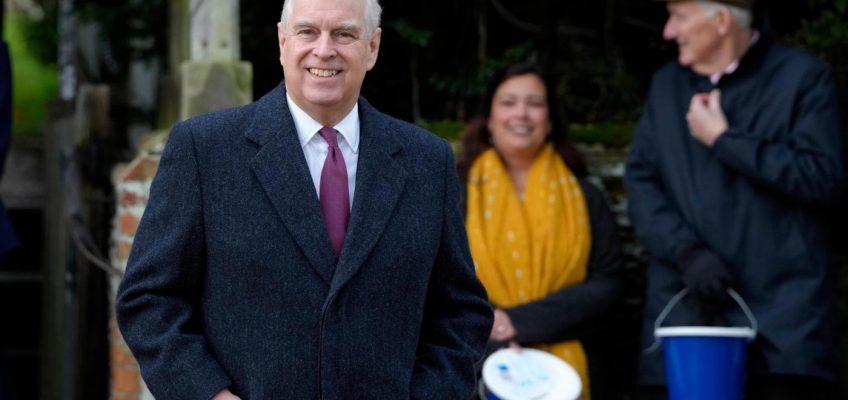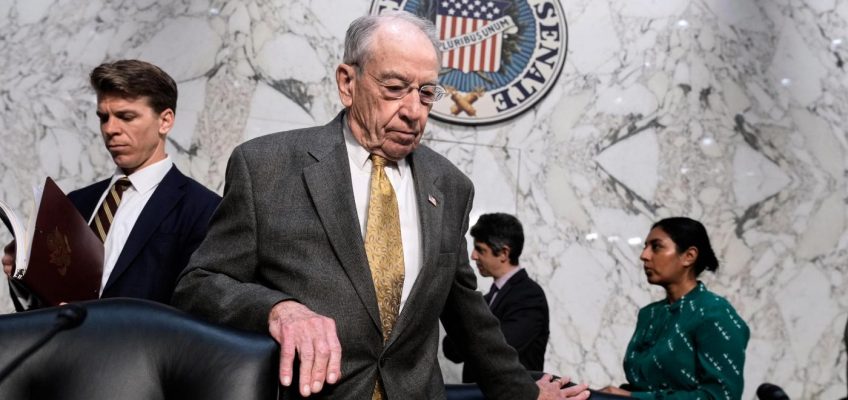By DANICA KIRKA
LONDON (AP) — Prince Andrew’s damaged reputation and desperate need for cash are again causing headaches for King Charles III after a court released more documents on Friday showing how Andrew’s problems led him to become entangled with a suspected Chinese spy.
Related Articles
Officials say a Russian strike in central Ukraine kills 14 people and injures 50
Europe and Canada say they’ll spend more on defense, but are cool on US demands
Israeli strikes kill at least 17 in Gaza as ground troops enter Palestinian territory’s north
Yoon Suk Yeol removed as South Korea’s president over short-lived martial law
In Tunisia, snails inch toward replacing red meat as people turn to cheaper protein
The Special Immigration Appeals Commission released the witness statement of Dominic Hampshire, a senior aide to Andrew who helped arrange meetings between the prince and the suspected spy, Chinese businessman Tengbo Yang. Yang was eventually authorized to operate on Andrew’s behalf as he sought Chinese investors for an initiative called the Eurasia Fund.
Andrew, also known as the Duke of York, needed to find other ways to support himself after he was forced to give up all royal duties following a disastrous interview with the BBC in 2019, Hampshire said in the statement. Andrew gave the interview to address concerns about his links to convicted pedophile Jeffrey Epstein, but it backfired when he failed to explain his continued contact with Epstein or show sympathy for his victims.
“After the Newsnight interview and in the following few months, it was clear that the duke’s reputation was irrecoverable,” Hampshire said in a 10-page statement dated May 25, 2024. “It was very clear internally within the royal household that we would have to look at options for the duke’s future away from royal duties,” he added.
Andrew’s vulnerability
British authorities worried that Andrew’s situation left him vulnerable to manipulation by Yang, who they believe was working on behalf of the United Front Work Department, an arm of the Chinese Communist Party that is used to influence foreign entities. Yang denies the allegations.
The British government barred Yang from entering the country in 2023 as a threat to national security. The Special Immigration Appeals Commission upheld that decision in December 2024.
Hampshire, who gave evidence on Yang’s behalf, said the king was briefed on Andrew’s initiatives.
“I have had two meetings with the Duke and His Majesty to discuss what the Duke can do moving forwards in a way that is acceptable to His Majesty,” Hampshire said. “It is also of note that, amongst other topics, the Eurasia Fund and (an investor) were discussed on both occasions with His Majesty.”
Buckingham Palace said on Friday that the king met with Andrew and his adviser to hear “outline proposals” for independent funding. Yang was never mentioned.
Andrew, one of the king’s younger brothers, has been repeatedly criticized for his links to wealthy foreigners, raising concerns that those individuals were trying to buy access to the royal family.
Hampshire’s statement was initially kept private, but the commission released it after appeals by news organizations that argued it was in the public interest.
Hampshire, who left Andrew’s service in 2022, said he sought to keep his statement out of the public domain to protect confidential communications with the security services and Buckingham Palace.
What the duke says
Andrew previously said he accepted government advice and ceased all contact with the Chinese national as soon as the concerns were raised.
“The Duke met the individual through official channels with nothing of a sensitive nature ever discussed,” his office said in December. “He is unable to comment further on matters relating to national security.”
British intelligence chiefs have become increasingly concerned about China’s efforts to influence U.K. government policy.
In 2022, Britain’s domestic intelligence service, known as MI5, warned politicians that a British-Chinese lawyer had been seeking to improperly influence members of Parliament for years. A parliamentary researcher was arrested in 2023 on suspicion of providing sensitive information to China.
Yang, 51, worked as a junior civil servant in China before he came to the U.K. as a student in 2002. He earned a master’s degree in public administration and public policy at the University of York before starting a business that advises U.K.-based companies on their operations in China.
He was granted the right to live and work in the U.K. for an indefinite period in 2013. Although he didn’t make Britain his permanent home, Yang told authorities that he spent one to two weeks a month in the country and considered it his “second home.”
Yang was stopped while entering the U.K. on Nov. 6, 2021, and ordered to surrender his mobile phone and other digital devices on which authorities found a letter from Hampshire and other documents that highlighted his close relationship with Andrew.
“I also hope that it is clear to you where you sit with my principal and indeed his family,” Hampshire said in excerpts from the letter released previously. “You should never underestimate the strength of that relationship. Outside of his closest internal confidants, you sit at the very top of a tree that many, many people would like to be on.”
In the witness statement released on Friday, Hampshire characterized those comments as “artistic license.”
“As is regularly the case in some communications, there was significant artistic license in ‘blowing smoke’ and stroking his ego to maintain (Yang’s) support of the duke,” Hampshire said.
Find more of AP’s coverage at https://apnews.com/hub/royalty




